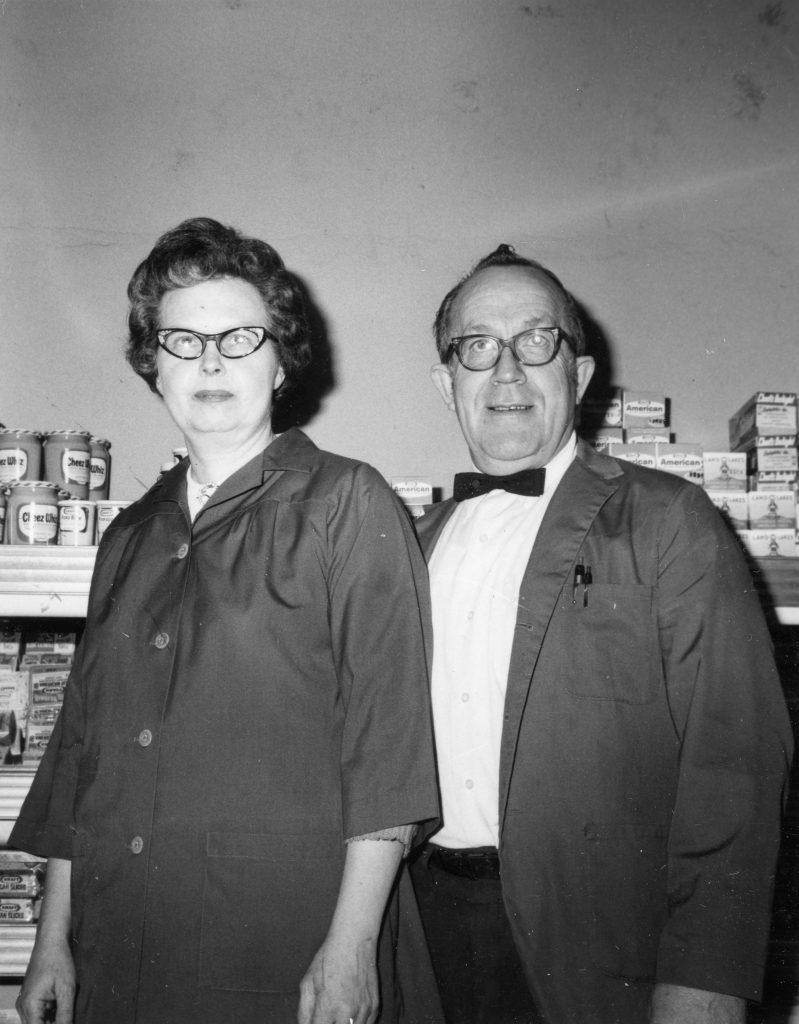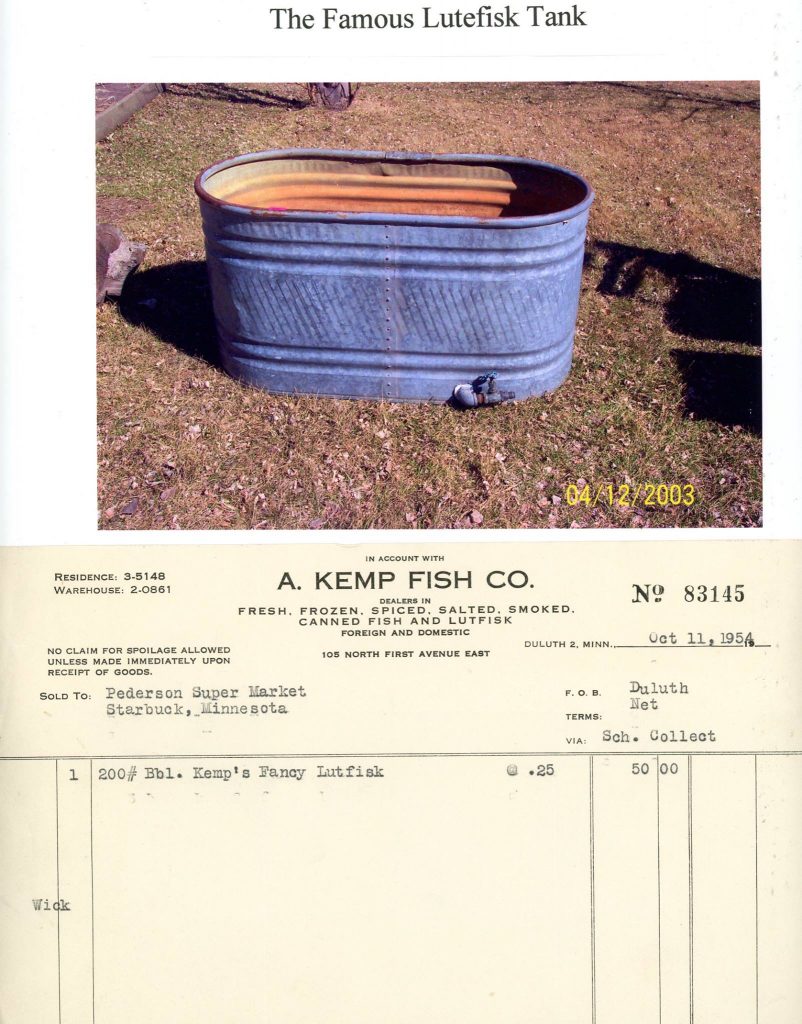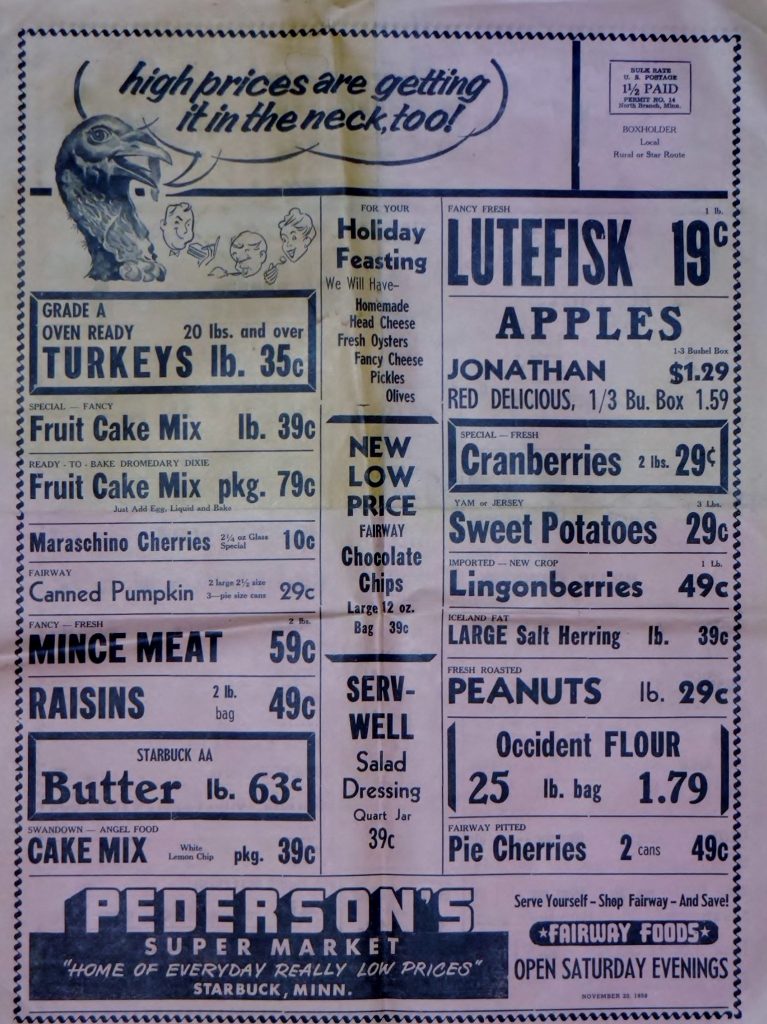
My parents were Rosalie and Marvin “Super Pete” Pederson (pictured). Dad owned and operated a family grocery store in Starbuck, Minnesota, from 1954 to 1994 and was known in this part of the state for his lutefisk sales. He made lutefisk by soaking dry cod first in the garage at our home in Starbuck and later in the backroom of our store. He learned the craft from Clayton Anderson, a grocer in North Branch, Minnesota, where Dad met Mom after the war. Clayton was emphatic that making fish took a lot of labor, in part because the lutefisk maker sold something that had soaked up about 10 times its weight in water.
One of Dad’s “tails” was from 1954, the first year he made fish. There was no plumbing available, so he drained the soaking water into the back alley. But in the spring, he had to pay to repair lawns that were damaged by the runoff. Yes, those were the days.
Cleaning Lutefisk Tanks
As I became older, I participated in that annual smelly event in our store by adding the lye and moving the fish from tank to tank during soaking. I also cleaned all debris at the bottom of the tank when the lye water had been drained.
With lutefisk, of course, there is the smell. Dad tried storing his many bales of dried fish in sheds of farmers, but they wanted no part of that. At our store, the smell was so bad in the backroom during fish season that dad put an exhaust fan in the wall. This annoyed neighbors, so he constructed a special room made from cement blocks to contain the smell. And he built a plywood ventilation chute to the roof where a fan blew the smell higher and away from the building.

Dad placed a stock tank in the store’s meat department to display the soaking fish to customers before they made their purchase. Dad would fill that with fresh water and ice blocks every day during the selling season. We used a baling hook to handle the fish. After purchase, it was wrapped in a wax-coated locker paper; in the later years we switched to plastic bags so it would not drip on the floor as much. Uffda!

I am thankful for the memories and opportunities that were presented to me by life in a small town grocery store. Recently I visit residents at our local retirement home, and another visitor, Bob Kyyvig, reminisced about standing in line to buy fish.
Recalling such lutefisk moments brighten my day.
